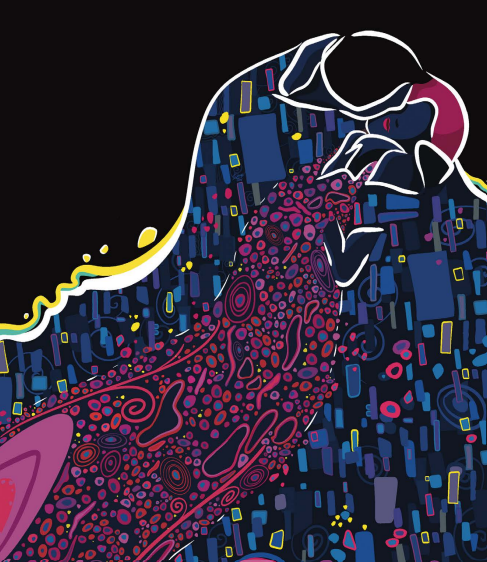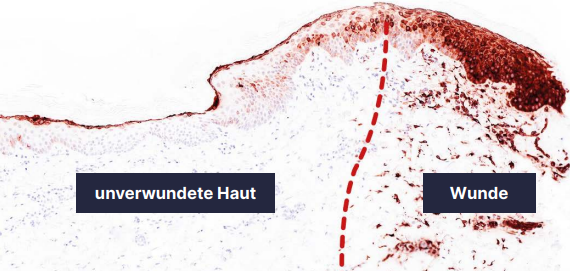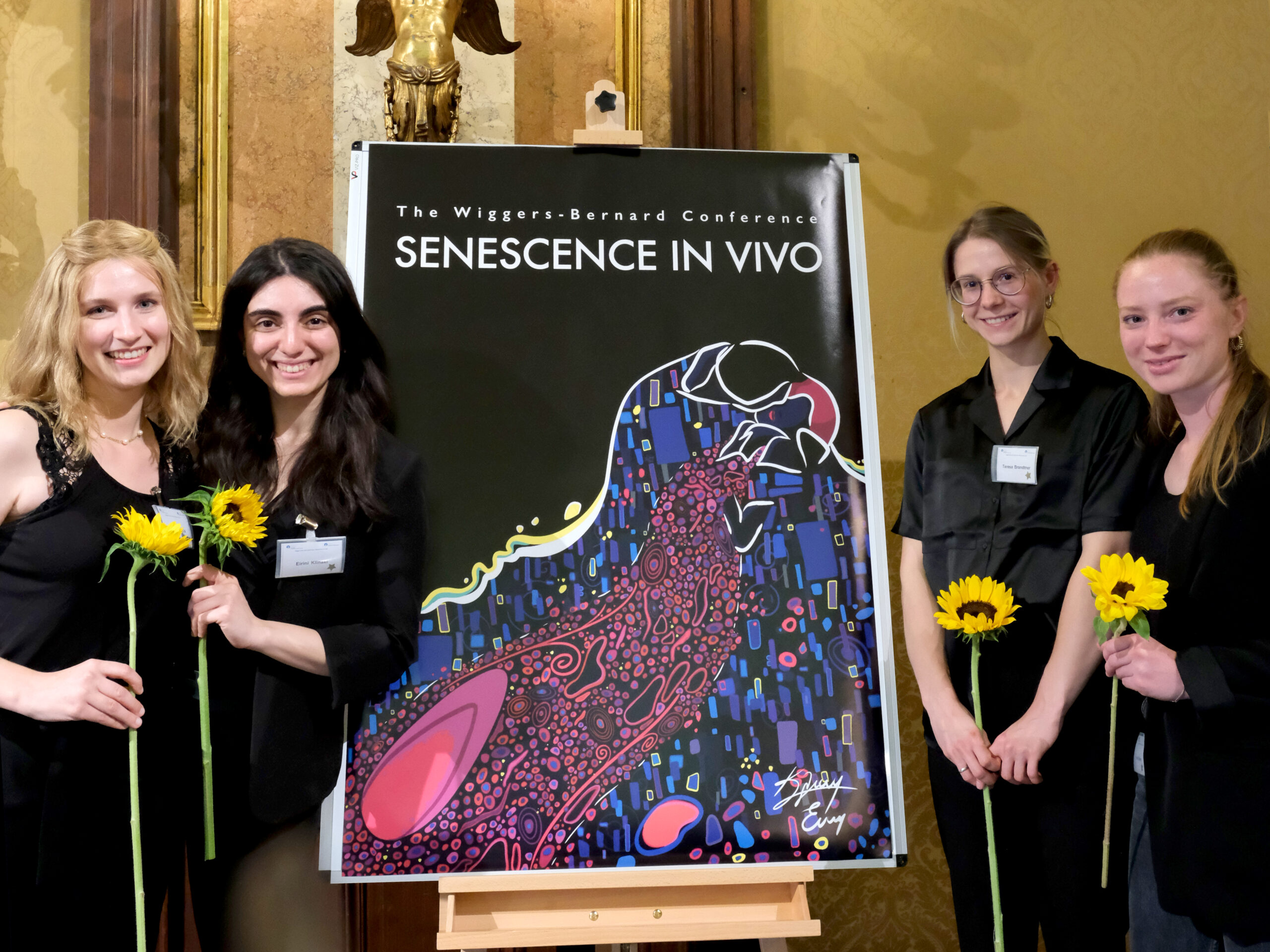How the invisible in wound healing comes to light
The Ludwig Boltzmann Research Group on Ageing and Wound Healing (LBG SHoW for short) researches wound healing in the laboratory and in the healthcare system. While the biomedical research team discovered a novel method of visualising healing, the co-creation team is making gaps in patient care visible.
Cellular response to injury
If the skin is damaged by an injury, this is immediately followed by bleeding. However, it takes some time before the wound healing processes can be observed. What exactly happens in the skin between wounding and healing and how the cells there react to this change is still largely unknown. The biomedical researchers at SHoW are therefore focussing intensively on the period of time that lies between tissue damage and the observable healing processes. Nadja Ring, Helene Dworak and their colleagues in Mikolaj Ogrodnik’s working group have so far been able to show that the ribosomal protein S6, or rpS6 for short, is activated within minutes in a clearly defined zone around the wound following an injury to the skin. With the activation of rpS6, the healthy cells in the wound area shortly after the injury signal to the tissue that the existing situation requires a special reaction. The tissue then converts this reaction into wound healing.
Biological-musical parallelisms
As in a well-rehearsed classical orchestra, the cells in the tissue of the damaged skin take on their specific roles. The orchestra musicians interact with each other and play the notes on the sheets in front of them as music. The tissue in turn interprets the activation of rpS6 in the healthy cells surrounding the wound in the skin and translates these signals into wound healing. This includes increased cell division, the formation of new blood vessels and the initiation of cell ageing, known as cellular senescence. The success of both the injury and the orchestral performance depends heavily on the functioning communication between the participants (cells or musicians). If this is successful, the result is a healed wound in the skin or a successful concert.
Health political causes of impaired wound healing
Impaired wound healing does not always have to have biological causes. The LBG SHoW co-creation team spoke to wound experts, analysed public documents, legal texts and literature and summarised them in a wound report. The conclusion: there is currently a lack of coordination in the Austrian system.
In order for patients to have the chance of a life without chronic wounds, several healthcare professions must work together. This is because those affected depend on experts to recognise and treat the causes of their open legs, for example. While chronic wounds often affect older people, the increase in vascular diseases and diabetes also increases the risk in younger people.
“Our idea of wounds is strongly characterised by injuries such as cuts or abrasions. ‘Wash it, put a plaster on, that’s fine.‘ Chronic wounds are different. They often even get bigger over time,” explains lead author and research group member Dr Conny Schneider.
Nursing staff, general practitioners and specialists in dermatology, vascular surgery, angiology and diabetology must coordinate across institutional boundaries so that the cause of the affected person’s condition, i.e. their primary disease, for example a specific circulatory disorder, is found and treated accordingly. Communication between specialists also enables patients to receive the appropriate dressing material quickly. Currently, this often only happens when individuals get involved. However, this cannot guarantee a standardised quality of treatment for all wound patients throughout Austria. Coming from different pre-existing conditions, such as peripheral arterial occlusive disease (PAOD), venous insufficiency or diabetes mellitus, patients are travelling around the wound treatment roundabout together – sometimes for months, without a diagnosis. Whether and how quickly people can get out of this cycle – and preferably not get back in with another wound – is not only the responsibility of those affected, but above all the responsibility of the system designers.


